Blog, trenchless people
NASTT’s Student Chapter at Rutgers University has been very active this year and we’re excited to share with you what they’ve been up to!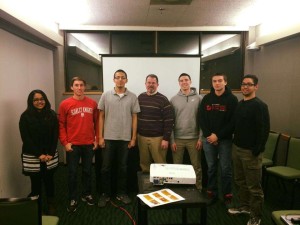
The students hosted a lecture with Richard Palmer of Northeast Remsco Corporation. This lecture introduced the members to the different techniques of trenchless technology. Mr. Palmer focused on microtunneling and the discussion consisted of project situations that Mr. Palmer and Northeast Remsco encountered.
The students also hosted a lecture with John Torrielli of Pim Corporation. Mr. 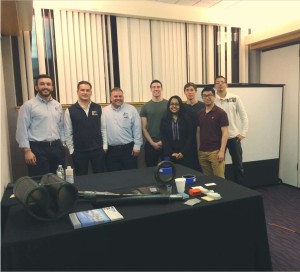 Torrielli discussed the pipe lining, polymer linings, and spray linings that are used to protect the pipe. The discussion focused on rehabilitation techniques, and the design properties of the linings used by Pim Corporation.
Torrielli discussed the pipe lining, polymer linings, and spray linings that are used to protect the pipe. The discussion focused on rehabilitation techniques, and the design properties of the linings used by Pim Corporation.
The final lecture was with Entech and consisted of examples of different kinds of construction projects where trenchless techniques were implemented.
The students participated in a very cool event and Chapter Members John Roche and Osbel Dorvil presented the importance of using ground penetrating radar to locate objects below the surface at a “Shark Tank”-inspired event hosted by Verizon.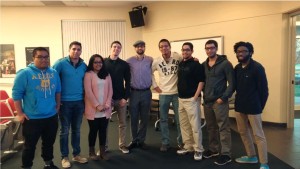
The Chapter hosted an incoming student open house where Fariba Shamonti, Osbel Dorvil and John Roche introduced NASTT to upcoming freshmen at the open house day. What better time to share the idea of trenchless technology?
In October, the Chapter participated Rutgers Plank Day by attempting to break the Guinness World Record for the most people holding the plank exercise position for 1-minute!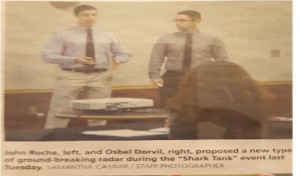
Kyle Boehme, Osbel Dorvil, John Roche, Cory McKenzie, and Adithya Thiruvalluvan held presentations for freshmen engineers to engage them and introduce them to NASTT at the Barr Residential Hall Info Session in October.
The Chapter held a site visit in Springfield, NJ at a PSE&G site and observed a pipe inverting machine, which aids in
reeling in the excess pipe. This was used for a Cast-In-Place-Pipe lining job which Rutgers NASTT members were lucky to attend with NASTT member and instructor, George Ragula.
The members of Rutgers NASTT Chapter observed a local water main rehabilitation and new installation project and learned how 3M Scotchkote is applied to pipes after tuberculation is removed during a site visit to New Jersey American Water & J. Fletcher Creamer in Millburn, NJ.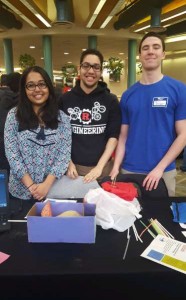
Great work Rutgers! NASTT is proud to call these fine students members!
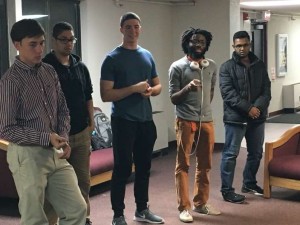
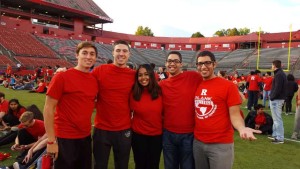
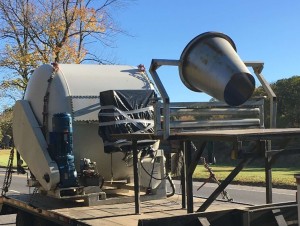
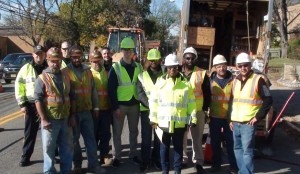
Blog, Industry News, trenchless products
Increased reliability and faster drilling.
THOMPSON, CONNECTICUT USA, November 30, 2016 – Numa, the world’s leader in DTH hammers and bit technology, has released a new generation of Patriot 60 and Patriot 65 hammers. Based upon advanced engineering and driller input, both hammers provide increased reliability, enhanced performance, and faster penetration rates than previous versions.
“The new generation of the Patriot 60 and Patriot 65 hammers was designed with direct feedback from drillers,” said Numa President, Ralph Leonard. “Numa took drillers’ input and created the new generation to deliver fast and reliable drilling in demanding applications around the globe.”
The Patriot 60 hammer is perfectly suited for water well, construction, oil & gas, utility, quarry, and mining drilling applications where contractors are not looking to run a heavy duty version. The hammer features a reversible case and operates at a higher pressure than the previous generation. Tests have proven the hammer has a higher BPM and drills consistently against back pressures, like water in the hole. The Patriot 60 has a 5.5” (139 mm) outside diameter and runs QL60 shank bits capable of drilling holes 6” to 8 ¾ ” (152 to 222 mm) in diameter. A version of the Patriot 60 is also available for 360 shank bits.
The Patriot 65 is a heavy duty hammer designed specifically for the quarry, mining, and construction industries where ground conditions warrant. The hammer boasts a thicker, reversible case but also produces the highest BPM of all Numa hammers. The Patriot 65 comes standard with back out carbides on the topside of the backhead to aid in recovery in the event of hole collapses. An additional option is carbide weld chucks for improved wear in highly abrasive formations. The Patriot 65 has a 5.75” (146 mm) outside diameter and runs QL60 shank bits capable of drilling hole 6 ¼” to 8 ¾” (159 to 222 mm) in diameter.
Numa is featuring the Patriot 60 and Patriot 65 hammers during Groundwater Week, December 7-8 in Las Vegas. Please stop by to discuss the new hammers with our expert staff that will be on hand in booth #1118.
ABOUT NUMA
Numa designs the world’s leading rock drilling technology with over 100 DTH Hammer and Bit products serving 11 different industries. Our products are capable of drilling vertical, horizontal, and reverse circulation holes from 3½ to 48 inches (89 – 1219 mm) in diameter and are used in 105+ countries. We have built our customer-centric reputation on providing the highest value in products, performance, and personal service available in the rock drilling industry.
Blog, Industry News
November 21, 2016
Woodard & Curran (#80 on the Engineering News-Record Top 500 Design Firms list) has acquired RMC Water & Environment (ENR #456), a 125-person, California-based, environmental engineering company focused on developing solutions to the complex challenges of using and protecting water. The acquisition of RMC expands Woodard & Curran’s national footprint to 26 offices in 12 states, and 48 clean water facilities across the country. The combined firm represents 1,000 engineers, scientists, planners, treatment facility operators, and support staff who expect to deliver more than $200 million in projects this year, strengthening its position as one of the top wastewater firms in the country and elevating it into the top 20 for water resources and supply.
“This marks an important milestone in Woodard & Curran’s history,” explained Woodard & Curran CEO, Douglas McKeown. “We have grown steadily since the firm was founded, maintaining our focus on supporting and empowering our people, working side-by-side with our municipal and private sector clients on some of the most important water and environmental challenges. We are thrilled to be able to bring the people of RMC into the Woodard & Curran team, and to be able to leverage their expertise and experience to benefit our employees and clients.”
“We were at a critical point in our growth,” said RMC President Alyson Watson. “Joining forces with Woodard & Curran allows us to expand our capabilities and offer more to our existing clients, and it gives us a national platform to deliver our expertise in water resources to many new clients.”
RMC was founded in the San Francisco Bay Area in 1998. With an impressive portfolio of large-scale projects, industry leadership in water recycling, and a strong reputation, RMC works for some of the largest cities in California on crucial water resource planning. The firm also provides water and wastewater design services to mid-size communities. Recent projects include preliminary design of the Santa Clara Valley Water District’s potable reuse program and design of wastewater treatment plant upgrades for the Cities of Brentwood and Yuba City. Earlier this year, RMC engaged Matheson Financial Advisors to initiate a comprehensive nationwide search for a merger partner that would provide the greatest benefit to both firms. Woodard & Curran was the clear choice, both in terms of service offerings and cultural fit.
Woodard & Curran was founded in Maine in 1979 to help clients address the needs arising out of the Clean Water Act. It has grown steadily since that time with a focus on water and environmental services. Today, the firm works with municipalities, companies, and institutions across a wide range of market sectors to anticipate and solve some of the most important water and environmental challenges in the United States. Recent projects include sewer collection system improvements for the City of Lawrence, MA, design of a wastewater treatment plant for Upper Montgomery Joint Authority in Pennsylvania, and contract operations of the South Sangamon Water District’s water treatment plant in Illinois.
“We have always been a values-driven organization,” said McKeown. “Our mission statement puts our people first, and our growth and success are a direct result of our focus on hiring exceptional people and empowering them to do what they do best. RMC’s history and approach are strikingly similar to our own. The match in values is easily as important as the overlapping set of skills and services across the two firms, and those shared values, expertise, and experience make for a very powerful combination.”
“We made a careful and conscious decision about who to partner with for this process,” added Watson. “Finding a firm that shared our values and had complementary strengths was very important to us. And we found that firm in Woodard & Curran.”
The firms will integrate capabilities beginning immediately, but in the near-term, RMC will retain its focus on serving its clients in California. RMC will operate under a co-branded identity through 2017 and then transition to operating as Woodard & Curran in 2018.
Woodard & Curran has offices in Enfield and Middletown, CT; Duluth, GA; Bangor and Portland, ME; Andover and Dedham, MA; St. Charles, MO; Bozeman, Butte, and Great Falls, MT; Cherry Hill and East Windsor, NJ; Elmira and White Plains, NY; Pittsburgh and Tunkhannock, PA; Providence, RI; and Casper, WY. RMC has offices in Irvine, Los Angeles, Sacramento, San Diego, San Francisco, San Jose, and Walnut Creek, CA.
Blog, Industry News, trenchless people
The International Society for Trenchless Technology (ISTT) seeks an Executive Director to
manage the business of ISTT. ISTT plans to select an Executive Director by the beginning of
2017. Applications will be accepted immediately. Please see ISTT Executive Director Position
Description at www.istt.com.
Applicants should submit a resume along with a cover letter describing their qualifications for
the job to ISTT at info@istt.com. Applications are due by 15 December 2016.
ISTT was established in 1986 in the United Kingdom as a private limited company to advance
the science and practice of trenchless technology for the public benefit. ISTT and its 28
worldwide Affiliated Societies hold and sponsor training and education programs, studies and
research, and technical conferences and exhibitions promoting the use of trenchless
technologies for the public benefit. Please go to www.istt.com for more information.
Blog, Industry News, trenchless products
Allows users to see deeper targets and operate in noisy conditions
By Jeffrey Feigin, PhD, GSSI
Ground-penetrating radar (GPR) is an electromagnetic imaging technique that allows users to see beneath the surface through soil, pavement, concrete, ice, and even water. GPR is widely used for utility mapping, concrete inspection, forensic investigations, geological surveys, and archaeology. Regulatory agencies place stringent power emission limits on GPR equipment to prevent disruption to other technologies that share the same spectra, for example, wireless communications and global positioning systems.
Now, new technology has been developed that meets even the most stringent GPR emissions regulations, including those of the U.S. Federal Communications Commission (FCC) and the European Telecommunications Standards Institute (ETSI), while operating at similar or faster speeds than conventional systems in difficult soil conditions. This new HyperStacking technique allows users to see deeper targets and operate in conditions considered too “noisy” for conventional systems.
Measuring signal variations caused by a buried object
GPR is an electromagnetic technology that uses the same kind of radio waves as microwave ovens, cellular phones, and broadcast radio and television. GPR systems operate under the same principle as other radar systems, medical ultrasound, and even fish finders. A GPR system includes an antenna, a power supply, and a control unit with electronics that trigger the pulse of radar energy the antenna sends into the subsurface. The antenna receives the electrical pulse produced by the control unit, amplifies it and transmits it into the ground or other medium at a particular frequency.
Subsurface variations will then cause these signals to bounce back. The strength and time required for the return of the reflected signals is then recorded on a computer integrated into the system. As the technician using the GPR equipment moves along the area being scanned, items detected are revealed and information is displayed on the computer screen in real time. The data collected is then analyzed and used to make specific recommendations.
For example, a GPR wave directed through the soil towards a piece of buried PVC pipe would reflect back some of the signal towards the surface. The magnitude and timing of this echo will be proportionate to the size and depth of the buried pipe. Since electromagnetic waves travel at the speed of light, if this pipe were buried at 3 feet (1 meter), a typical echo will occur just 20 nano-seconds (billionth of a second) after the signal is sent. This means that exceptionally fast receiver circuitry is required to correctly estimate the timing and scale of the signal.
Unfortunately, the standard signal observation methods are slow, particularly in certain soil conditions. The classic method for observing very fast events with relatively slow circuitry is to use a stroboscopic technique known as equivalent time sampling (ETS). This method requires multiple sampling acquisitions at different clock timing. The samples taken from each acquisition are put together and reconstructed. Multiple triggers are required to capture enough points to reconstruct the waveform. The technique is most useful when capturing repetitive signals. [1]
Like a camera flash, which can make a fast-moving object look frozen in time, electrical waveforms can also be captured at just one precise instant. By repeating the transmitted signal many times, but moving the exact instant of capture, one can simulate the echo response.
It can be likened to making a 100-frame motion picture of a bullet travelling through the air – but doing so by firing the gun 100 times and triggering the camera at a different time for each firing. Though stroboscopic techniques can be effective for capturing extremely fast-moving events, they are not the best or most efficient way.
Just as modern high-speed video cameras now exist for capturing a bullet in flight in real-time, we can now also capture an entire ultra-fast radar reflection the same way – by averaging (or stacking) the results of many individual GPR scans. Random environmental and electronic noise disappears through this averaging process, while weak targets emerge from the snow-like obscurity. Since high speed GPR systems recover identical radar scans hundreds of times faster than conventional ETS systems, this averaging operation goes on in the background and does not affect the rate of data collection.
HyperStacking technology
The technique is used in a new technology patented by GSSI [2], which greatly improves the receive performance of a GPR system while maintaining measurement speed and radiated emission limits. The new technology, known as “HyperStacking,” uses high speed interpolated sampling to reduce such commonly encountered issues as dynamic range limitations, regulatory compliance issues, sampler core offset error, and timing errors.
The benefits of the new HyperStacking technology are pronounced in lower frequency applications (GPR applications requiring an antenna below 1.6 GHz), such as in dirt, clay, sand, and more. In these conditions, the ground media is sufficiently lossy to make the benefits of HyperStacking clear. GSSI is developing its HyperStacking technology in a range of antenna frequencies to meet the specific needs of a variety of applications.
The 350 MHz antenna, for instance, is ideal for utility detection in soil conditions in the 0-15 ft range. Lower-frequency antennas, in to 100-200 MHz range, are well-suited for geotechnical applications, such as water table analysis, characterization of shallow stratigraphy, bedrock depth analysis, and analysis of deep geological structures. In these applications, traditional techniques such as ETS cannot achieve the same level of precision as HyperStacking.
With the commonly used ETS technique, hundreds or even thousands of pulses are transmitted to obtain a full measurement set over the desired time range. However, most of the received energy is discarded and the resultant measurement is inefficient, in terms of noise, relative to the amount of energy transmitted. By contrast, the new technology uses high speed interpolated sampling, which recovers all or most of the reflected radar information, greatly improving the measurement signal energy with respect to noise. In the past, these techniques have been expensive and far too energy-consuming, but recent advances in integrated circuit technology have enabled the development of low-cost devices that perform at reasonably high speeds while consuming relatively small amounts of power.
This more efficient signal detection directly translates to improved system performance in certain applications. Measurement results produced by the technique resolve targets at least 5 percent deeper and 5 percent smaller than conventional ETS GPR. The system can also produce individual measurement results at extremely high speeds – at least 1000x that of a conventional ETS system.
Figure 1 shows an example of a HyperStacked GPR measurement compared to a conventional ETS measurement. It shows that the HyperStacking system can see significantly more clearly and deeper than the conventional ETS system. Both are 400 MHz GPR systems and the measurements were taken at the same time and same location with identical processing. [Caption: Two GPR files taken at the same location at the same time with identical processing. left: HyperStacking, right: conventional (ETS)]
[1] Understanding Real Time and Equivalent Time Sampling, https://bkprecision.desk.com/customer/portal/articles/1535427-understanding-real-time-and-equivalent-time-sampling, retrieved 11/19/15.
[2] Realization of time-domain ultra wideband ground-penetrating radar using high speed accumulation and interpolated sampling, Patent EP 2698647 A1, http://www.google.com/patents/EP2698647A1?cl=en, retrieved 11/19/15
Blog, Industry News, trenchless products
OKAHUMPKA, Fla., November 3, 2016 – Vac-Tron Equipment is excited to introduce a whole new line to their 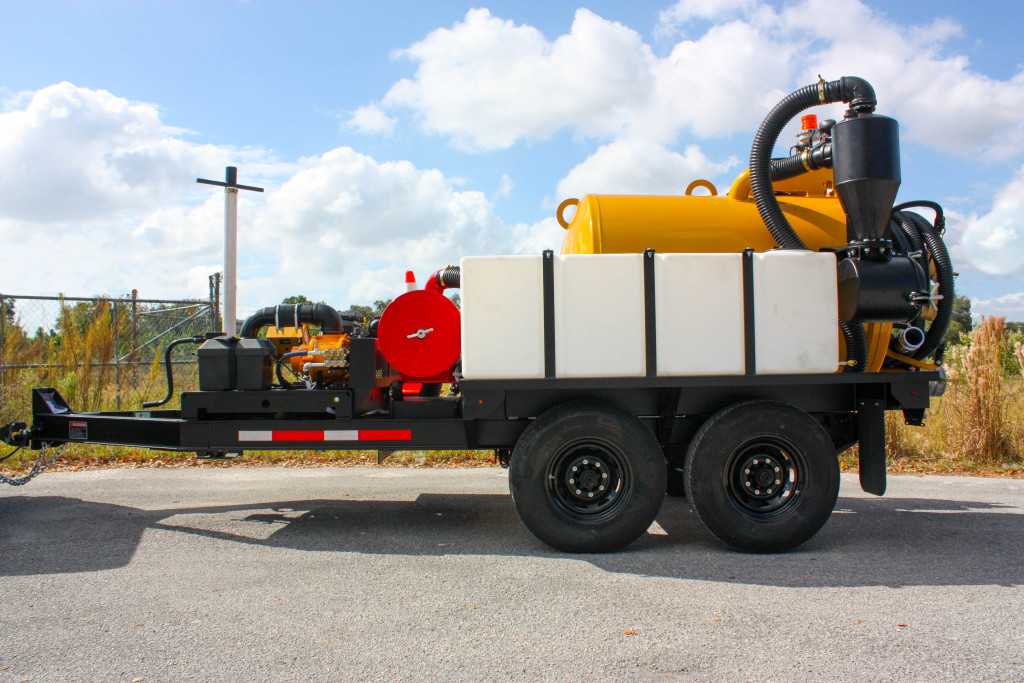 vacuum excavation equipment. It’s the new CV (Competitive Vac) Series. This series offers the performance you have come to expect from Vac-Tron Equipment while keeping the cost of operation to a minimum.
vacuum excavation equipment. It’s the new CV (Competitive Vac) Series. This series offers the performance you have come to expect from Vac-Tron Equipment while keeping the cost of operation to a minimum.
Standard equipment:
CV GT models: Powered by 27 HP Kohler EFI gas engine, 580 cfm @ 15 Hg, Wet/dry filtration with cyclonic separation, 500 or 800-gallon debris tank, 7 Series Claw Door, Hydraulic rear door with auto engage safety latch, 200 – 300-gallon water capacities, 3500 psi @ 4 gpm, Water knife and clean-up wand, 30’ x 3” vacuum hose.
CV SGT High CFM models: Powered by a 37 HP Kohler gas engine, 1000 cfm @ 15 Hg, Wet/dry filtration with cyclonic separation, 500 or 800-gallon debris tank, 7 Series Claw Door, Hydraulic rear door with auto engage safety latch, 200 – 300-gallon water capacities, 3500 psi @ 4 gpm, Water knife and clean-up wand, 30’ x 4” vacuum hose.
Optional reverse pressure is also available.
For more information about our CV Series, contact Vac-Tron Equipment at 888-822-8766 or visit us at www.vactron.com.

 Torrielli discussed the pipe lining, polymer linings, and spray linings that are used to protect the pipe. The discussion focused on rehabilitation techniques, and the design properties of the linings used by Pim Corporation.
Torrielli discussed the pipe lining, polymer linings, and spray linings that are used to protect the pipe. The discussion focused on rehabilitation techniques, and the design properties of the linings used by Pim Corporation.









